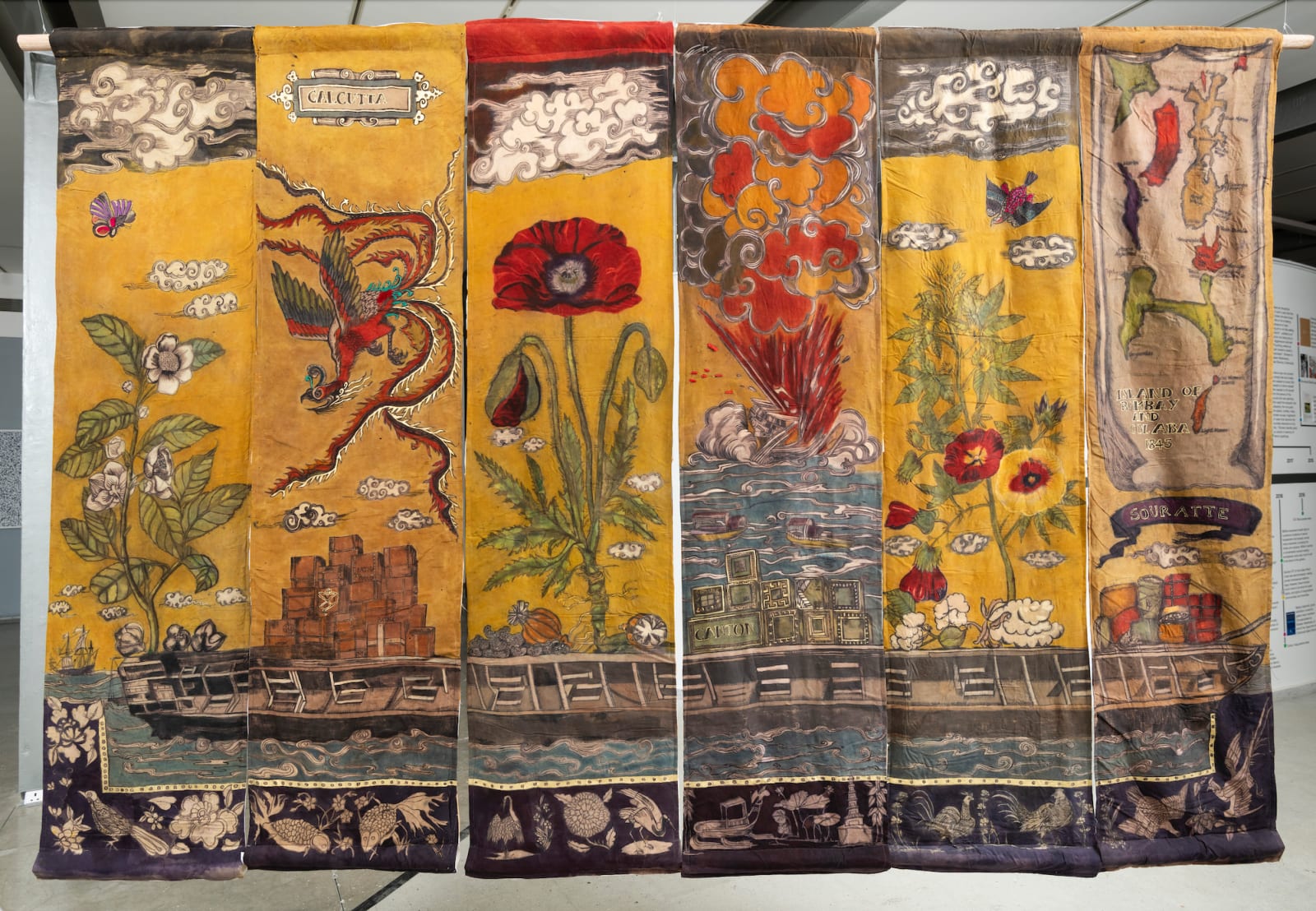Lavanya Mani Indian, b. 1977
190.5 x 279.4 cm
On the other side, natural dye painting derived from kalamkari ties together Parsi gara sari motifs lining a pictorial history of shipping opium, tea and cotton across geographies. From Patna to Surat to Malwa, opium trade in colonial India led to the generational wealth of many, of which the Parsis were quite prominent. Upon closer viewing, the ecological symbols of flora and fauna are telling of travel, colonial empire building, and the losses suffered at its behest. A decolonisation of all our systems is required to redress centuries of damage.
